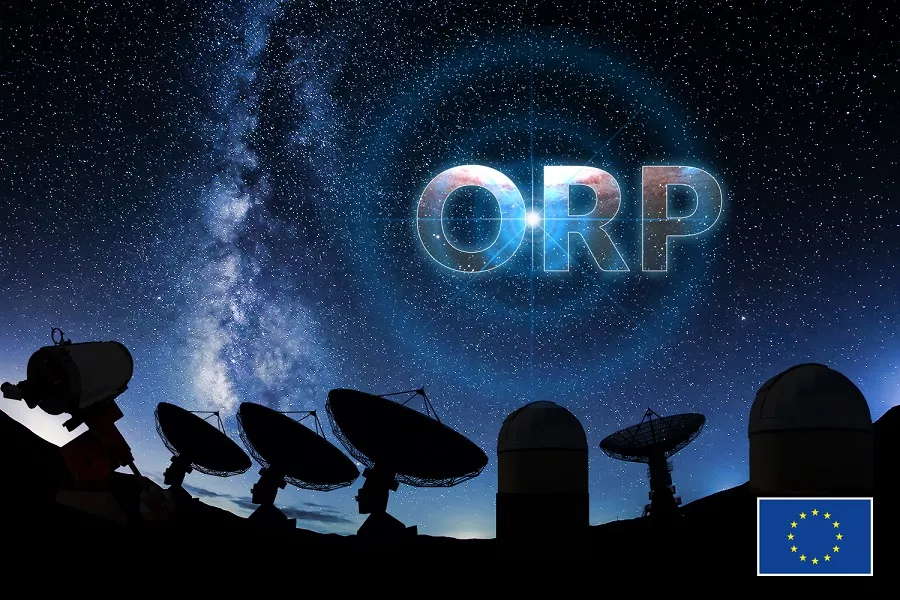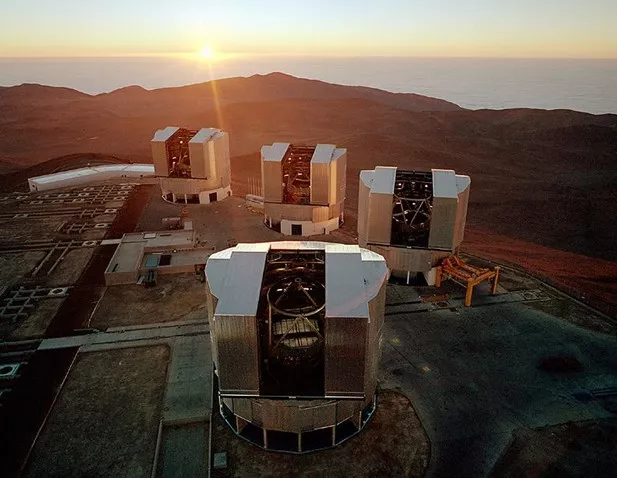The Konkoly Thege Miklós Astronomical Institute at the ELKH Centre for Astronomy and Earth Sciences has announced that it will join the largest collaborative network of ground-based astronomy in Europe. The new OPTICON-RadioNet PILOT (ORP) network is the result of the merger of two pan-European projects that have been operating successfully for decades: OPTICON, which formerly specialized in optical astronomy, and RadioNet, which specializes in radio astronomy. The network is coordinated by the French CNRS in close collaboration with the University of Cambridge in the UK and the Max-Planck-Institut für Radioastronomie in Germany.
As researchers learn more about and explore the universe, it is becoming increasingly important in astronomy to have complementary observational techniques to aid our understanding of different astrophysical phenomena. This need led the European Union to connect the OPTICON and RadioNet networks.

The OPTICON-RadioNet PILOT (ORP), which received funding of EUR 15 million from the EU's Horizon 2020 programme, is the largest European network for ground-based astronomy (image source: BeabudaiDesign)
The new international collaboration has been awarded EUR 15 million in funding from the EU's Horizon 2020 framework programme. Its aim is to coordinate astronomical observation tools and methods, provide researchers with access to a variety of optical and radio telescopes, help train new generations of researchers, and open up avenues for new discoveries.
Within the framework of this network cooperation, the CSFK Astronomical Institute plans to establish the Hungarian VLTI Expertise Centre. The VLTI (Very Large Telescope Interferometer) is the European Southern Observatory's (ESO) telescope system, which offers European astronomers an opportunity unlike any in the world by combining several giant telescopes. With the VLTI, researchers can study the universe at milliarcsecond at near-infrared and mid-infrared wavelengths.

The European Southern Observatory's VLTI interferometric telescope system (image source: ESO)
In setting up the Centre, the Astronomical Institute is building on decades of work by Hungarian astronomers and their experience with VLTI instruments (GRAVITY, MATISSE, AMBER, MIDI and PIONIER). One of the strategic goals of the Hungarian VLTI Expertise Centre is to join a network of similar centers in Europe and thus to disseminate cutting-edge interferometric observation methods in Hungary and neighbouring countries.
Dr Péter Ábrahám, scientific advisor to the Astronomical Institute, ORP's Hungarian coordinator and an expert in astrophysical research, said: "VLTI opens up a new, innovative dimension in cosmic exploration with its previously unimaginable angular resolution measurements. I see ORP as a great opportunity to make this fabulous technique available to other researchers."
In particular, ORP aims to contribute to the development of a rapidly expanding field of research, time domain astronomy, which obtains information about the interior or environment of celestial objects by observing the changes in their brightness. In this area, the Astronomical Institute, with ORP support, continues to pursue the highly recognized and successful work of the European Space Agency (ESA) on the Gaia space telescope.
"We often think of the starry sky as a constant that never changes. This is less and less true as our brightness measurements reach one-millionth precision, and as our telescopes in space keep a constant eye on hundreds of millions of stars. Every day, Gaia shows that the brightness of millions of objects has changed. From these signals, machine learning is used to select those that might be so exciting for the astronomical community that it is worth pointing ground-based instruments at them immediately. We are particularly interested in the light changes of very young stars that are still being formed, because this can help us understand the formation and early evolution of the Sun and its planetary system," says Dr Gábor Marton, a research associate at the Astronomical Institute, who is leading the research on Gaia's ever-changing sources within the ORP project.
Standardizing observing protocols and data processing methods will help break down the barriers between the optical, infrared and radio science disciplines, and help researchers collaborate more effectively when jointly observing astronomical phenomena as they change over time.
Representatives from the astronomical community from 15 European countries, Australia and South Africa, as well as from and 37 institutions have joined the ORP consortium.